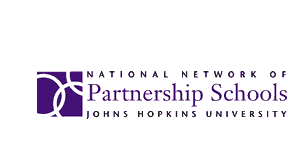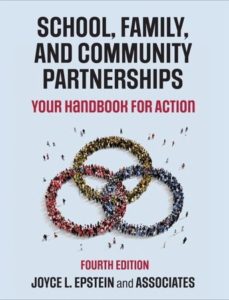August 28, 2017
Did You Do Your Homework?
Joyce L. Epstein, Ph.D., Director, NNPS
Did you do your homework? This is one of the most common questions that parents1 ask children every day. Parents, teachers, and even students agree that homework is important. Countless research studies confirm that students who do their homework do better in school, have higher achievement, progress through the grades, compared to similar students who do not do their homework. Studies also report that many parents, students, and even teachers say that the quality of homework is poor, uninteresting, or just busy work. These contrasting realities—homework is important and homework needs to improve—both true—guide our research and design of homework.
Did you do your homework? This question also applies to researchers who aim to design interventions to improve school practice. Many years ago, my colleagues and I set a research agenda to improve school policies and practices of parental involvement. Prior to 1980, most studies simply asked, “Are families important?” Scores of studies—including the historic 1966 Equality of Educational Opportunity Report (also called the Coleman Report, led by James S. Coleman, one of the founders of CSOS)—concluded that families are significant influences on student achievement and success in school. The early studies revealed an important inequality in schools: only some parents were engaged in their children’s education and only some children benefited from this support. Others were at a serious disadvantage.
A New Agenda
In the 1980s, I posed a new question. Building on the well-confirmed results from prior studies, I asked: IF families are so important, HOW can schools enable all families and community partners to become involved in ways that help all students do their best in school? My colleagues and I began to do our homework to learn everything we could about policies and practices of parent involvement, which we renamed school, family, and community partnerships. We followed the Center’s hallmark of conducting programmatic research to move from theory development and basic research to new designs, field tests, and dissemination on family and community engagement.
I developed the theory of overlapping spheres of influence that asserts that home, school, and community are three important contexts for children’s learning and development (i.e., the external structure of the model), and that positive, goal-linked communications and collaborations among key people (e.g., teachers and parents in the internal structure of the model) will increase student success in school. Within the model’s areas of overlap, we identified a framework of six type of involvement (parenting, communicating, volunteering, learning at home, decision-making, and collaborating with the community) that help schools at all levels organize and improve their programs of partnerships.
In this framework, homework is part of Type 4-Learning at Home. Homework, we learned, needed serious attention in research and in re-design. Two main questions emerged that needed attention to improve the homework process and correct important inequities so that more students succeed in school:
- IF homework improves student achievement over time, THEN how can teachers design homework that motivates students at all grade and ability levels to take the time they need to complete their assignments?
- IF parental involvement contributes to students’ homework completion and success in school, THEN how can teachers design homework that enables all parents to easily remain engaged with their children on homework at all grade levels?
In our studies of homework, we learned that parents’ most common question was: “How can I help my child on homework?” Parents wanted to help their children, but most said that they did not know how to assist at every grade level, in every subject, with children of different ability levels. In an extensive literature review, we identified ten purposes of homework (e.g., practice, personal development, parent-teacher communication, parent-child interactions, peer relations, policy compliance, and others. Each purpose requires a different design of homework. Two purposes, parent-teacher communication and parent-child interaction connected to our broader agenda on school, family, and community partnerships. We turned our attention to these purposes of homework to design an intervention that would meet parents’ requests and increase student success in the elementary and middle grades.
What is TIPS?
Many teachers and curriculum leaders in schools, districts, and state departments of education worked with me over the years to develop and test the Teachers Involve Parents in Schoolwork (TIPS) interactive homework process. TIPS activities guide students to show a parent or family partner something interesting that they are learning in class. This enables all parents to learn about their students’ work and progress without parents thinking that they should know how to “teach” school subjects—something most parents cannot do and do not wish to do.
One section of every TIPS activity guides students to talk with a parent about how the focal math, science, or language arts skill is used in everyday life. This application is stressed in Common Core and other state standards, but is, typically, difficult for teachers to build into homework assignments. TIPS activities also include a Home-to-School Communications section for parents to comment on their interactions with their children and ask questions of teachers.
For example, in TIPS Science in the middle grades, one activity guides students to conduct an experiment with a parent as science-assistant to measure the viscosity of common liquids used at home. They also conduct a discussion on whether the flow of some liquids influences a parent to purchase certain brands in the supermarket (e.g., ketchup, hand lotion, salad dressing, dish washing liquid, etc.).
In TIPS Math in the elementary grades, one activity guides students to demonstrate how they are learning to identify fractional parts and to have a discussion with a parent on when they use fractions in everyday activities at home.
Research on TIPS
Three longitudinal studies were conducted by Dr. Frances Van Voorhis on the effects of TIPS math in the elementary grades, and TIPS science and language arts in the middle grades.2 Compared to matched non-TIPS classes, students in TIPS classes had parents who were significantly more engaged with them on homework. Students and parents in TIPS classes had more positive attitudes and emotions about homework. Significantly more TIPS parents than controls reported feeling happy and less frustrated when working with their students on homework. By contrast, parents of students in non-TIPS classroom noted that they “need more information” from the teacher to be able to help their student at home, whereas this information is “built in” to the TIPS assignments. The studies also showed that more students in TIPS classrooms completed their homework, and improved achievement test scores or report card grades compared to similar students in control classes who were assigned “homework as usual.”
TIPS for Use in Practice.
There are, now, over 600 prototype TIPS activitiesin math (grades K-5, 6-8), science (grades 3, 6-8), and language arts (grades K-3, 6-8) for teachers to use to improve the homework process. Why are these products “prototypes?” TIPS is not a “curriculum” because (a) homework must match teachers’ class lessons or it will confuse children and parents and (b) educators do not like “canned” programs. One size cannot fit all. On the TIPS CDs, activities are provided in two formats. Teachers whose lessons match the TIPS activities may use the PDF format. Teachers who need to change concepts, vocabulary, or procedures may use the WORD versions. See TIPS resources or contact NNPS with your questions or to conduct a TIPS study in your schools (www.partnershipschools.org).
Looking Ahead
As our programmatic work on school, family, and community partnerships continues to expand, we will to continue studies of the effects of TIPS on students, parents, and teachers to improve the homework process and student success in school.
1 In all of our work, we use the word “parent” to mean anyone who is responsible for a child’s learning and development, and who has connections with teachers (e.g., parent, grandparent, older sibling, other family partner).
2 New activities for TIPS Early Literacy K-3 and TIPS Math in the Middle Grades (Grades 6-8) are ready for research in case and control classrooms.
Blog with NNPS. What do you think?
- How does your school (or schools you supervise) design homework that enables all parents to work with their child in positive ways?
- Why are the results of research on the effects of TIPS of interest to you?
- Why are TIPS materials (manuals, CDs) for math (grades K-5, 6-8), language arts (grades K-3, 6-8), and science (grade 3, 6-8) of interest to you?

